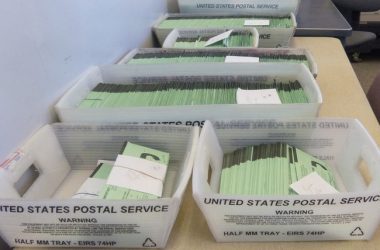HARPER – The U.S. Bureau of Land Management gathered nearly 40 wild horses in a management area in northern Malheur County just west of Harper as part of its 10-year plan to curb the growing horse population on more than 20,000 acres of public land.
The agency rounded up 38 horses from the Hog Creek management area Wednesday, Aug. 23 and trucked them to the Wild Horse Burro in Hines, according to Larisa Bogardus, Vale BLM public relations officer.
There, the horses were checked by veterinarians, vaccinated, and microchipped, Bogardus said. Of the animals collected Tuesday, 14 were selected to return to Hog Creek – seven studs and seven mares, Bogardus said.
The mares selected to remain in the management area received a birth-control vaccination, according to Bogardus.
Bogardus said the horses the BLM chose to remove permanently have been placed in private care and will be prepared for adoption or sale. Those not selected for adoption will be shipped to BLM pastures in the Midwest.
Before Tuesday’s wild horse roundup, BLM wild horse specialists estimated there were 66 wild horses in Hog Creek. The appropriate management level for the area is up to 50, according to agency planning documents.
Malheur County has about 2,500 wild horses across nine herd management areas on over a quarter million acres of public land.
Federal officials with the Vale BLM say the areas could sustain up to less than a thousand.
Meanwhile, wild horse specialists with the Vale BLM said the population is growing by roughly 20% annually and has become too large for the range. The wild herds are overgrazing native plants, which reduces feed for other wildlife in the area.
Additionally, wild horse specialists note in BLM planning documents that if herds grow too big they damage rangelands.
Wild horses grazing in riparian areas such as streams and rivers can be incredibly destructive, according to the specialists. The horses are attracted to riparian areas for water and green grass. However, their year-round presence doesn’t allow recovery from grazing. When a section of the range is overgrazed, native plants face more competition from invasive weeds, the documents point out.
BLM officials estimate Oregon’s current wild horse population to be around 4,500, doubling every four years.

NEWS TIP? Send an email to [email protected].
SUPPORT OUR WORK – The Malheur Enterprise delivers quality local journalism – fair and accurate. You can read it any hour, any day with a digital subscription. Read it on your phone, your Tablet, your home computer. Click subscribe – $7.50 a month.




